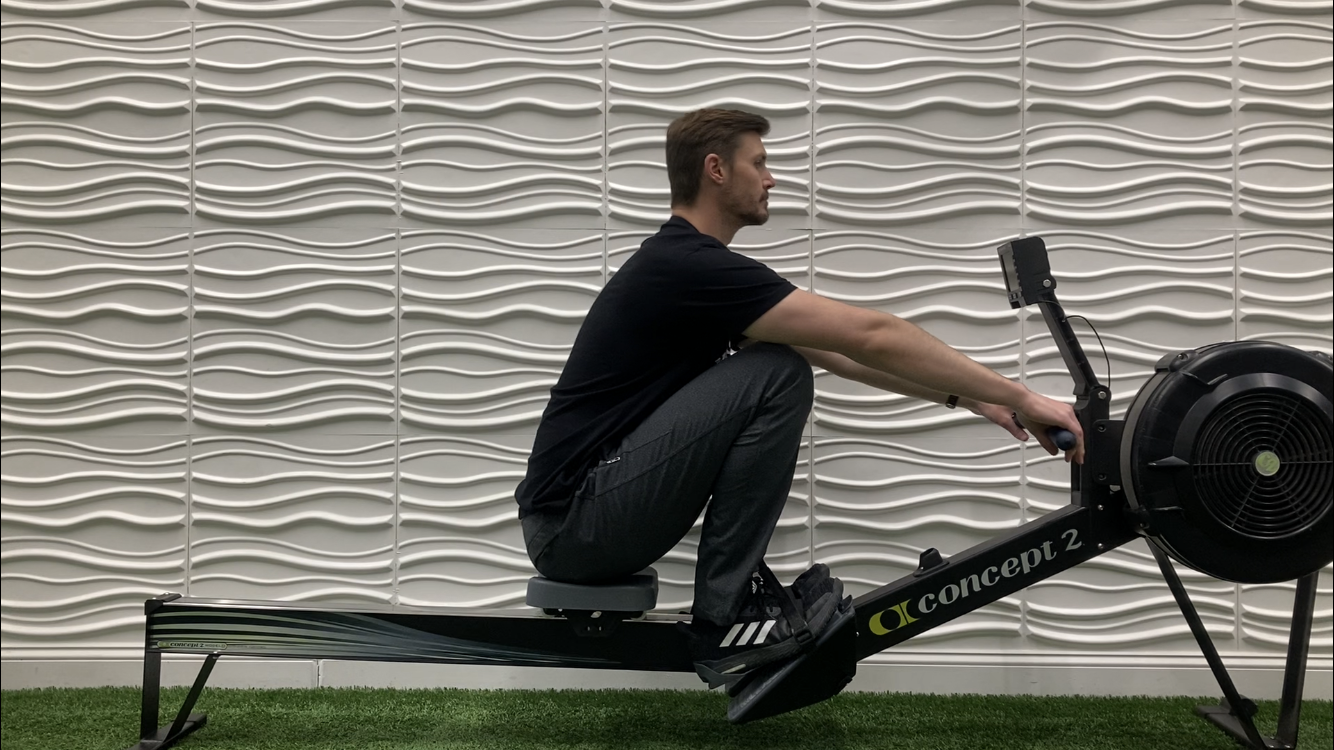"Too much forward pelvic tilt will limit our hip motion, potentially cause hip impingement, and/or force our low backs to round into the catch." Watch the Hip Motion Video The amount of hip mobility that we possess has an impact on our rowing performance as well as our injury potential (1,2,3). Two studies conducted during the rowing stroke found that a greater amount of hip mobility was a key component that contributed to the amount of force applied against the footplate (1,2). Another study found that increased forward pelvic tilt at the catch should decrease the amount of rounding and loading of the lumbar spine (3). At face value these three studies support the idea that more mobility at the hips and pelvis is beneficial. Before you rush to get as flexible as possible consider how your hip position might impact your stroke. Simply changing the way we position our hips will impact our "flexibility". If we have too much forward tilt of the pelvis, or too little forward tilt, both will decrease our performance, increase our injury risk and result in technical compensations. Here's what the two extremes look like below. Too Much Too much forward pelvic tilt will limit our hip motion, potentially cause hip impingement, and/or force our low backs to round into the catch. Too Little Too little forward pelvic tilt will allow for more motion at the hips but it will immediately put us in a compromised position as our butt tucks underneath us from the very beginning of the stroke. Just Right The appropriate amount of reach and forward body angle into the catch will put us in the ideal position. If we don't have any movement limitations we'll be able to reach into the catch with an upright posture, forward body angle, vertical shins, and a slight lift from our heels. Experiment with both extremes, then try something in the middle to find your "just right" position. If you're still feeling limited, check your set-up/rigging, and address any movement limitations that you may have. Stay Hip ;) [1] Buckeridge, E., Bull, A., McGregor, A. (2015). Biomechanical determinants of elite rowing technique and performance. Scandinavian Journal of Medicine and Science in Sports, 25. [2] Buckeridge, E., Weinert-Aplin, R., Bull, A., McGregor, A. (2016). Influence of foot-stretcher height on rowing technique and performance. Sports Biomechanics, 15. [3] Ogurkowska, M., Kawalek, K., Zygmanska, M. (2015). Biomechanical characteristics of rowing. Trends In Sport Sciences, 22(2).
0 Comments
Leave a Reply. |
Author
Blake Gourley holds a Masters of Science in Sports Performance Training and has over 12+ years of experience working with rowers. Read more Categories
All
Archives
August 2023
|



 RSS Feed
RSS Feed